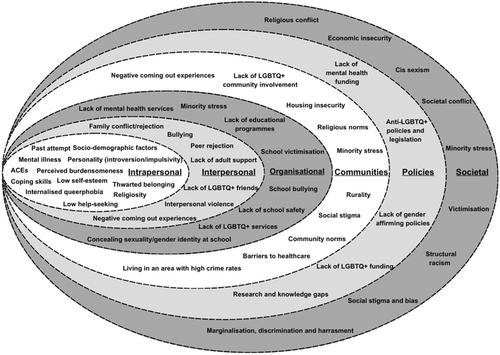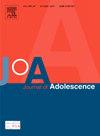Lesbian, gay, bisexual, transgender, and queer (LGBTQ+) young people experience higher prevalence rates of suicidality than their heterosexual and/or cisgender peers. However, there is limited research that can inform suicide prevention efforts. Our aim was to synthesize quantitative, qualitative, and mixed methods research on risk and protective factors among LGBTQ+ young people, from countries with a high Global Acceptance Index.
A scoping review guided by Arksey and O'Malley's five-stage framework, using the Preferred Reporting Items for Systematic Reviews and Meta-analysis Extension for Scoping Reviews protocol. Five databases and grey literature were searched for relevant studies. Identified factors were clustered by thematic type, according to the socio-ecological model to identify empirical trends and knowledge gaps. The mixed methods appraisal tool was used for quality assessment of studies.
Sixty-six studies met our inclusion criteria. Overall, 59 unique risk factors and 37 unique protective factors were identified. Key risk factors include past suicidality, adverse childhood experiences, internalized queerphobia, minority stress, interpersonal violence, bullying, familial conflict, and anti-LGBTQ+ policies/legislation. Key protective factors include self-affirming strategies, adult/peer support, at-school safety, access to inclusive healthcare, family connectedness, positive coming out experiences, gender-affirming services and LGBTQ+ inclusive policies and legislation.
Overall, our findings affirm that multiple risk and protective factors, at all levels of the socio-ecological model, interact in complex, unique and diverse ways upon suicidality among LGBTQ+ young people. Implications for suicide prevention are discussed. Further empirical studies are required, particularly at the communities, policies, and societal levels of the socio-ecological model, and these studies should include a focus on protective factors and significant within-group differences.



